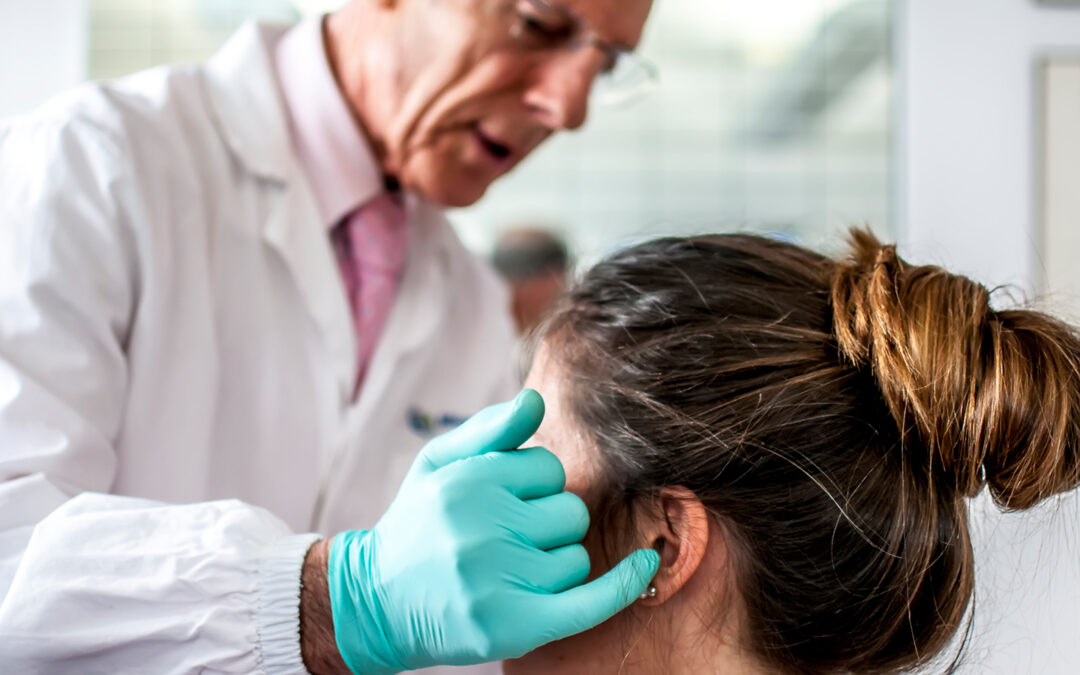Insight Neurosurgery – Trigeminal neuralgia is a chronic condition that affects the trigeminal nerve, which is responsible for carrying sensations from the face to the brain. This chronic, debilitating condition ranges in severity but is often described as a piercing electrical shock-like sensation that can impact anything from the jaw and forehead to the eyes and teeth.
For most patients, the attacks stop for a period of time, only to return with greater frequency as the condition progresses. Each year, as many as 150,000 people in the United States experience some form of trigeminal neuralgia, and it is more likely to affect women over the age of 50.
Fortunately, if you are experiencing symptoms related to this condition, there are a number of effective treatment and management options available. The following is a guide to trigeminal neuralgia, including common triggers, causes, and pain relief resources for all levels of symptom severity.

What is Trigeminal Neuralgia?
Trigeminal neuralgia is a painful condition that affects the trigeminal nerves in the face. Unlike other conditions that cause facial pain, trigeminal neuralgia is characterized by a stabbing electric shock-like pain that can last for seconds to a few minutes or longer. This condition usually only affects one side of the face, although both sides may be impacted in rare cases.
What Causes Trigeminal Neuralgia?
The exact cause of trigeminal neuralgia is unknown. In some patients, symptoms are spontaneous. Others have experienced symptoms after facial trauma, surgeries, and dental procedures. Researchers believe symptoms are the result of a blood vessel pressing on the trigeminal nerve. When this occurs, a protective barrier called myelin wears away and exposes the highly sensitive nerve. In rare cases, multiple sclerosis and tumors may cause symptoms similar to trigeminal neuralgia.
What Triggers Trigeminal Neuralgia?
Trigeminal neuralgia pain flare-ups are often triggered by certain tasks or movements. Pain usually starts in short bursts and becomes more frequent over time. For many people, pain may last for a few weeks or months and then disappear – sometimes for over a year. For others, pain may be a continuous dull or stabbing sensation that persists for an extended period of time. Common triggers include eating, drinking, talking, brushing teeth, shaving, applying makeup, and exposure to wind.
How Can I Manage Trigeminal Neuralgia Pain?

Medication
Your primary care physician and neurosurgeon will work with you to find an optimal medication treatment plan to manage your symptoms. Carbamazepine, which is a common drug used to control seizures, has been proven to be effective at treating trigeminal neuralgia pain. Muscle relaxing medications may also be used alone or in combination with other treatments. Most patients will start with a low dose that gradually increases under close clinical supervision to avoid experiencing damaging side effects. Routine blood testing may be required taking medication to monitor factors such as white blood cell count and liver function.
Nonsurgical Trigeminal Nerve Blocks
Nonsurgical trigeminal nerve blocks are a type of therapeutic treatment that injects a local anesthetic or steroid medication into the affected nerve. Although this treatment method is safe and effective, it only provides temporary pain relief for most patients. Multiple injections are recommended to achieve the best results. The duration of effectiveness also varies for each patient and the symptoms they are experiencing. Your primary care physician and neurosurgeon will consider the severity of your symptoms before recommending a nerve block treatment method.
Alternative Treatment Methods
There are a number of nonsurgical alternative treatments for trigeminal neuralgia that have been successful for many patients, including acupuncture, chiropractic care, dietary changes, heat or cold therapy, and even support groups. As always, it is important to consult with your doctor before choosing any new treatment methods. For more information, the Facial Pain Association has a variety of resources for managing facial pain, finding peer support, and exploring treatment options.
Surgery
If conservative treatment methods are no longer effective in managing trigeminal neuralgia pain, surgery may be considered. There are a number of effective procedures and your neurosurgeon will help you determine the best choice based on your symptoms, age, and overall health. The following is a brief overview of common surgical procedures for trigeminal neuralgia.
Rhizotomy: A rhizotomy is a minimally invasive outpatient procedure that removes sensation from the median nerve by killing fibers responsible for sending pain signals to the brain. There are several ways the fibers can be destroyed, including electrical currents or heat and chemically using glycerin. Pain relief from this procedure is only temporary. However, approximately 80% of patients experience relief for one to three years.

Microvascular Decompression (MVD): Microvascular decompression is a surgical procedure that separates the blood vessel from the trigeminal nerve using a small cushion. This is the most long-lasting treatment for trigeminal neuralgia pain and approximately 80% of patients experience success. However, MVD is more complicated than other procedures and requires a brief hospital stay for observation and four to six weeks of recovery.
Stereotactic Radiosurgery: Also known as Gamma Knife treatment, this non-surgical outpatient procedure uses a concentrated beam of radiation directed at the trigeminal nerve to relieve pain. This option is fast, painless, and is successful in about 70% of patients. Stereotactic radiosurgery is also temporary, with most patients experiencing pain relief for several years.
Trigeminal neuralgia can be extremely painful and occur without warning. However, with a wide range of medications, nerve block procedures, and surgeries, most patients are able to successfully manage their symptoms and live a pain-free life. Not all facial pain is the result of trigeminal neuralgia, which is why it is important to speak to a healthcare professional if you are experiencing similar symptoms.
At Insight, our highly-skilled neurosurgeons specialize in diagnosing facial pain and believe in treating each patient with compassionate, personalized care. For more information and to schedule an appointment, call 810-275-9333 in Flint or 312-567-2000 in Chicago.

